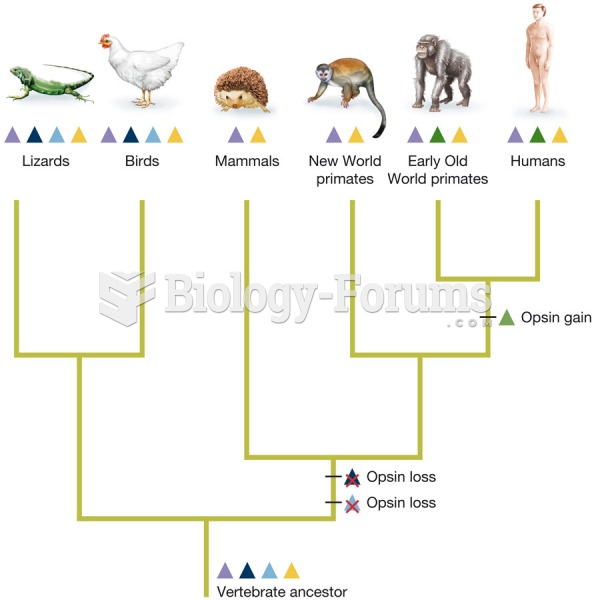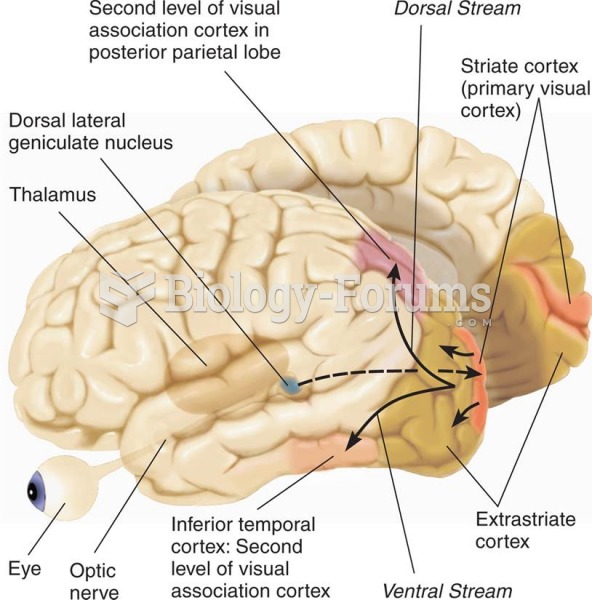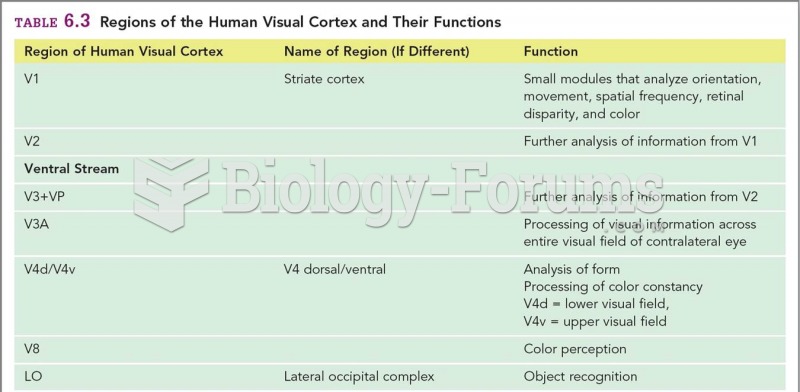|
|
|
Did you know?
Atropine, along with scopolamine and hyoscyamine, is found in the Datura stramonium plant, which gives hallucinogenic effects and is also known as locoweed.
Did you know?
In 1864, the first barbiturate (barbituric acid) was synthesized.
Did you know?
The average adult has about 21 square feet of skin.
Did you know?
If all the neurons in the human body were lined up, they would stretch more than 600 miles.
Did you know?
Disorders that may affect pharmacodynamics include genetic mutations, malnutrition, thyrotoxicosis, myasthenia gravis, Parkinson's disease, and certain forms of insulin-resistant diabetes mellitus.






